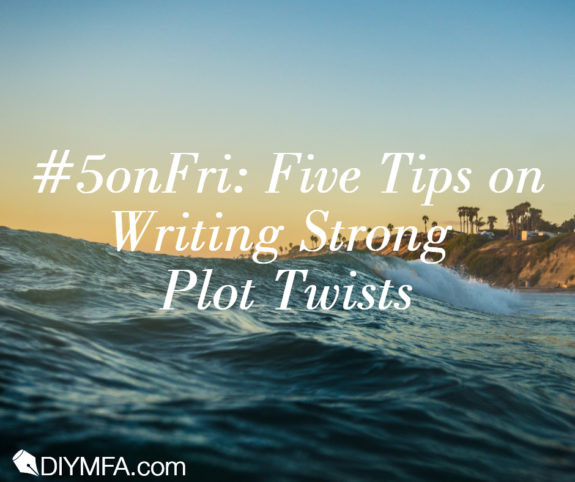From Agatha Christie to Alfred Hitchcock, plot twists have long been used to amuse and amaze us. But they’ve become so pervasive in recent fiction—especially in crime, thriller, and mystery novels—that readers have come not just to expect plot twists, but tire of them. Indeed, many twists these days are predictable, poorly structured, or simply unrealistic.
But that doesn’t mean plot twists are impossible to pull off. As books like Gone Girl and Big Little Lies demonstrate, great twists are still alive and kicking. And while the exact nature of your plot twist depends on your story, the process for constructing one is surprisingly simple! Here are five tips on how to write fresh and believable twists that your readers will remember.
1) Toe the believability line
When it comes to writing plot twists (and fiction overall), there’s something called the believability line: the point at which readers stop suspending their disbelief and start denouncing a story for being ridiculously unrealistic. Crossing the believability line is sort of like jumping the shark—basically, it causes the audience to lose faith in your storytelling ability.
So before you integrate a plot twist, ask yourself: does this go over the line? All great plot twists are at least a little unbelievable, otherwise they wouldn’t be so effective. (It’s called a “twist” for a reason!) But there’s a limit to what your readers are willing to accept.
Think about potential plot twists this way: if it’s something you might read about in a newspaper, like a man killing his best friend of 20 years, or even a pair of long-lost siblings being reunited, then it’s convincingly realistic. But if it’s something you’d see on a soap opera, like someone coming “back from the dead” to steal their twin sister’s identity, then it’s probably too much.
2) Use the buildup to challenge your reader
The most believable and satisfying twists depend on some narrative buildup before the big reveal. Yes, you can have a plot twist with no foreshadowing whatsoever, but then you risk readers feeling cheated by the lack of clues and chucking your book into the open sea.
That said, you also can’t be too heavy-handed with your hinting, or readers will figure out the twist prematurely—which can be just as demoralizing as having no clues at all. Remember, the challenge of trying to guess is half the fun!
So once more, the answer lies in balance: not too much buildup, not too little. You don’t need a clue on every page, but try to have a few small, subtle ones at the beginning. Then you can increase them in the chapters and scenes leading up to the twist itself.
One of the best ways to subtly hint at a twist is to keep details vague and let readers draw their own conclusions. For example (spoilers ahead), in Paula Hawkins’ The Girl on the Train, the reader assumes that Megan is having an affair with her psychiatrist because many scenes of her in therapy are juxtaposed with love scenes of her affair.
However, Hawkins never actually names the man Megan is sleeping with, and it turns out to be someone else entirely. You could still guess the mystery man’s identity if you were reading carefully enough, but it’s definitely a challenge—making this the perfect level of buildup.
Your goal should be to make the reader think deeply about, if not quite uncover, the plot twist. Then when it finally comes, they’ll be able to look back and realize which clues they caught— and which they may have missed.
3) Give characters robust motivations
Your characters drive your whole plot, which means they’re going to be right at the center of your twist: one character betrays another, reveals a life-changing secret, murders someone, etc.
But in order for a dramatic twist to make sense, you need to establish character motivations that explain why your characters do what they do. These motivations should take into account each character’s backstory and inherent nature, as well as the external factors that cause them to act. All of this paints a well-rounded, realistic picture of each character—such that when the twist comes, it should be clear to the reader how and why it all went down.
Of course, in keeping with tip #2, you don’t want to reveal too much about your characters before the twist actually happens—just enough that the reader has a sense of who they are and what they’re prepared to do.
4) Don’t take too much from tropes
As you probably know, there are certain kinds of plot twists that have been done many times. And while it’s perfectly fine to gather inspiration from these twists, you don’t want to mimic them too closely—especially those that are notoriously outrageous.
We’re talking about plot twists like: “he was dead all along,” “Luke, I am your father,” “it was all just a dream,” etc. Not only are most of these hard to believe in the first place, they’re also so well-known that any jaded reader can pick them out a mile away. Such tropey twists are ultimately a lose-lose: they’re unrealistic and predictable at the same time.
Though it can be a slippery slope into the trope trap, you should be safe as long as your plot twist isn’t a carbon copy of another mega-famous one. Again, drawing inspiration from other sources can be helpful, but the final iteration of your twist ought to be as original as possible.
5) Save the best for last
You might have several plot twists throughout your story, but you should save the most exciting and dramatic one for the final act. There are some exceptions to this—it depends on what the twist is and how you want to use it—but most of the time, the biggest twist serves as the perfect climax for your story.
Even though your reader will likely anticipate a twist at the end, there are a few things you can do to misdirect them so it’s still a surprise. For instance, you might make them think the crucial twist has already happened, but then have a different twist later in the story that’s even bigger. Liane Moriarty has tons of twists in her stories, so you can never quite be sure if there’s another, even more dramatic one coming.
You can also employ the “one-two punch” method of having one twist come immediately after the other right at the story’s end, so the audience is caught completely off-guard. Gillian Flynn does this in her story The Grownup (spoilers again): Miles tells the narrator that his mother’s going to kill her, only to reveal soon after that he’s been pulling the strings all along.
With the help of these tactics, you should have readers wrapped—or should we say twisted— around your little finger in no time. Best of luck becoming the next M. Night Shyamalan! (From the Sixth Sense era, of course.)
 Savannah Cordova is a writer with Reedsy, a marketplace that connects authors and publishers with the world’s best editors, designers, and marketers. In her spare time, Savannah enjoys reading contemporary fiction and writing short stories. Naturally, she’s a big fan of plot twists (when they’re done right).
Savannah Cordova is a writer with Reedsy, a marketplace that connects authors and publishers with the world’s best editors, designers, and marketers. In her spare time, Savannah enjoys reading contemporary fiction and writing short stories. Naturally, she’s a big fan of plot twists (when they’re done right).







